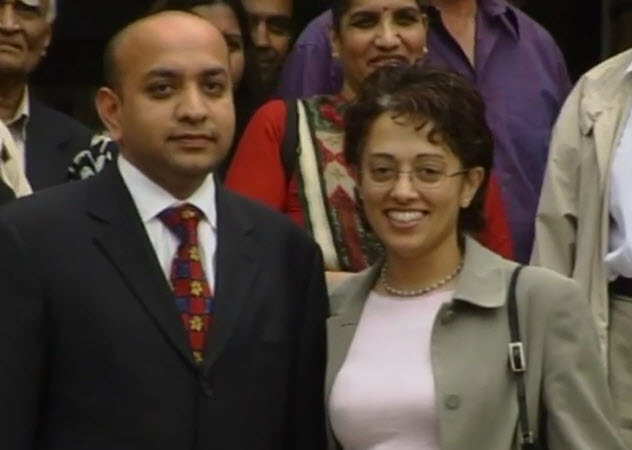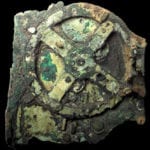 Miscellaneous
Miscellaneous  Miscellaneous
Miscellaneous  Creepy
Creepy 10 Shocking Tales of Bodies Found in Abandoned Houses
 Politics
Politics Top 10 Surprising Facts from the Life of Jimmy Carter
 Sport
Sport 10 Popular but Terrible Goalkeepers
 Technology
Technology The 10 Most Compelling Aircraft That Didn’t Succeed
 Movies and TV
Movies and TV 10 Ridiculous Riffs on Robin Hood
 Technology
Technology 10 Extreme Structures We Might See in the Future
 Miscellaneous
Miscellaneous 10 Catastrophic Translation Fails in History
 History
History 10 Wild Facts About the Mutiny on the HMS Wager
 Our World
Our World 10 Secrets Places You Won’t Believe
 Miscellaneous
Miscellaneous 10 Fascinating Origins of New Year’s Eve Superstitions
 Creepy
Creepy 10 Shocking Tales of Bodies Found in Abandoned Houses
 Politics
Politics Top 10 Surprising Facts from the Life of Jimmy Carter
Who's Behind Listverse?

Jamie Frater
Head Editor
Jamie founded Listverse due to an insatiable desire to share fascinating, obscure, and bizarre facts. He has been a guest speaker on numerous national radio and television stations and is a five time published author.
More About Us Sport
Sport 10 Popular but Terrible Goalkeepers
 Technology
Technology The 10 Most Compelling Aircraft That Didn’t Succeed
 Movies and TV
Movies and TV 10 Ridiculous Riffs on Robin Hood
 Technology
Technology 10 Extreme Structures We Might See in the Future
 Miscellaneous
Miscellaneous 10 Catastrophic Translation Fails in History
 History
History 10 Wild Facts About the Mutiny on the HMS Wager
 Our World
Our World 10 Secrets Places You Won’t Believe
10 Parents Who Were Falsely Accused Of Murdering Their Children
The greatest tragedy a person could ever face is the loss of their child. However, as horrible as this situation is, it can escalate into something even worse. Imagine a parent attempting to cope with such a tragedy when the finger is pointed at them and they are wrongly accused of being responsible for their own child’s death.
In some cases, there is no crime at all. The child died from tragic, unforeseen circumstances, but faulty evidence somehow led to false accusations of murder. The following people had to go through this unfathomable ordeal after losing their children.
10 James Richardson
In 1967, James Richardson lived in Arcadia, Florida, with his wife, Annie Mae, and their seven children, aged two to eight. Three of the children were from Annie Mae’s previous marriage, but James had fathered the rest. On October 25, James and Annie Mae went to work and left their children in the care of a neighbor named Betsy Reese.
Over the course of the day, all seven children became seriously ill, and each of them would be dead by the following morning. Autopsies revealed they had eaten food laced with poison, and Reese directed authorities toward a shed on the property containing a deadly insecticide called parathion. Suspicion fell upon James because he had allegedly purchased insurance policies on all his children. He was subsequently charged with their murders.
At trial, the prosecution presented testimony from jailhouse informants who claimed they had heard James confess to the crime. James was convicted and sentenced to death, though the sentence was later commuted to 25 years.
In 1989, James’s defense team requested a new trial after uncovering new evidence to support his innocence. One of the jailhouse informants had recanted his testimony about James’s confession. Even though a salesman had offered life insurance policies to James, he had never actually purchased them.
By this time, Betsy Reese was in a nursing home, and two employees claimed she had confessed to poisoning the Richardson children. At the time of the murders, Reese was on parole for the fatal shooting of her second husband. Years earlier, Reese’s first husband had also died under suspicious circumstances after eating food she had prepared for him. Reese’s third husband had also left her for one of James’s cousins, giving her a potential motive to murder James’s children.
This new evidence compelled the Florida Supreme Court to overturn James Richardson’s conviction, and he was released from prison. Betsy Reese was never charged.
9 David And Cynthia Dowaliby
In 1988, seven-year-old Jaclyn Dowaliby lived in Chicago with her mother, Cynthia, and her stepfather, David. On the morning of September 10, the Dowalibys woke up to discover that Jaclyn was missing from her bedroom and that the room’s window had been broken.
Four days later, Jaclyn’s body was found 5 kilometers (3 mi) away in a field behind an apartment building. She had been strangled to death with a rope. The Chicago PD felt great pressure to solve this case and shocked everyone by indicting David and Cynthia Dowaliby for their daughter’s murder. They argued that the bedroom window had actually been broken from the inside and that the abduction scene was staged.
The primary evidence against the Dowalibys was a witness who saw a man at the dump site on the night of Jaclyn’s disappearance. Even though the witness was 70 meters (230 ft) away, he claimed that he recognized the man as David Dowaliby because of their similar nose structure.
Since here was no hard evidence tying Cynthia to the crime, the trial judge decided to acquit her before the jury even deliberated. Nevertheless, the jury still rendered a guilty verdict against David, and he was sentenced to 45 years in prison. In 1991, the Illinois Supreme Court ruled that there was insufficient evidence against David and overturned his conviction.
A possible suspect in Jaclyn’s murder was Timothy Guess, the schizophrenic brother of her biological father. He initially had an alibi for the night of the crime, but it came apart upon further examination. Guess also provided specific details about Jaclyn’s murder, which were not released publicly, but which he claimed a “spirit” had told him. However, the Chicago PD still maintains their original position that the Dowalibys were responsible.
8 Michelle Murphy
On the morning of September 12, 1994, 17-year-old Michelle Murphy awoke in her Tulsa, Oklahoma, apartment. She was horrified to discover that her three-month-old son, Travis, had been stabbed to death on the kitchen floor. At approximately 3:00 AM, police had received a 911 call from a 14-year-old neighbor named William Lee, who claimed that he saw Michelle getting into a violent argument with Travis’s biological father.
When police went to the apartment, they saw no signs of disturbance and left the scene. Lee then claimed that he returned to the apartment 90 minutes later and peeked through the window to see a bloody Michelle standing over Travis’s body. Curiously, Lee never called 911 to report this. Even though Michelle had no trace of blood on her and the murder weapon was never found, she was charged with her son’s murder.
Lee testified at the preliminary hearing against Michelle but soon wound up hanging himself during an autoerotic asphyxiation accident. Lee’s tape-recorded testimony would be used as evidence at the trial, but his credibility as a witness could not be questioned by Michelle’s lawyers since he was no longer alive to defend himself.
Even though Travis’s father denied Lee’s claims that he was at the apartment that night, Lee’s testimony helped secure a conviction and Michelle was sentenced to life in prison. However, the prosecution failed to disclose that type AB blood had been found at the murder scene, which did not match Michelle’s or Travis’s blood type.
In 2005, post-conviction DNA testing was granted and it showed that none of the blood at the scene belonged to Michelle. However, she would languish in prison for nine more years before these results were officially disclosed. In 2014, Michelle Murphy’s conviction was vacated. She was released from prison before the charges against her were dismissed.
7 David Lee Gavitt
In 1985, 26-year-old David Lee Gavitt lived in Ionia, Michigan, with his wife, Angela, and their two children, three-year-old Katrina and 11-month-old Tracy. On March 9, the couple went to bed and left some candles burning in the living room. Shortly thereafter, they were awakened by the family dog and discovered that the living room was on fire.
David claimed that he sent his wife to awaken their children while he smashed open a window. When the fire became too intense for David to reach his children, he was forced to escape out the window. By the time the fire department arrived, it was too late to save the rest of the family. Angela, Katrina, and Tracy all died of carbon monoxide poisoning. However, investigators came to believe that David had started the fire intentionally and charged him with arson and three counts of first-degree murder.
Even though no motive was presented at David’s trial and neighbors claimed that he had kept trying to reenter the house to rescue his family, numerous experts testified that gasoline was used to start the fire. David was convicted on all counts and was sentenced to life in prison.
In 2010, David’s case caught the attention of the University of Michigan Law School’s Innocence Clinic, which consulted with some new arson experts to take a fresh look at the case. They concluded that all the original evidence was faulty and there was never any gasoline used at the scene. The candles likely started the fire and created a flashover, building up so much heat inside the room that everything ignited into flames.
During the 1980s, fire experts were not yet aware of this phenomenon. In June 2012, David Lee Gavitt finally had his conviction vacated and was released.
6 Trupti Patel

For years, a Berkshire, England, pharmacist named Trupti Patel went through a nonstop series of tragedies with her newborn children. In 1997, she gave birth to a son named Amar, who died unexpectedly soon after he was born. Two years later, Trupti gave birth to another son named Jamie, who died without explanation 15 days later. Another tragedy struck in June 2001 when Trupti’s newborn daughter, Mia, passed away when she was only 22 days old.
Suspicion started to fall upon Trupti after it was discovered that Mia had four broken ribs. According to Trupti, Mia had sustained her broken ribs during an attempt to resuscitate her. Nevertheless, she would be charged with the murders of her three infant children in May 2002.
The prime evidence against Trupti was the expert testimony of noted pediatrician Roy Meadow, who was often called to testify at murder trials involving infant children. When a woman named Sally Clark was convicted of murdering her two sons years earlier, Meadow testified that the statistical probability of two babies in the same family dying of natural causes was 1 in 70 million.
Trupti’s defense team countered with testimony from a genetics specialist, who stated that the multiple deaths of her children could have been the result of an undiscovered genetic defect. In fact, this type of thing was not unprecedented in Trupti’s family as her maternal grandmother had actually lost 5 of her 12 children during infancy.
As Trupti’s trial went on, Roy Meadow’s credibility was called into serious question. Sally Clark’s conviction was overturned, and it became apparent that Meadow’s faulty testimony had assisted in the unjust murder convictions of multiple women whose children had died of natural causes. In the end, Trupti Patel was acquitted of all charges.
5 David Camm
David Camm was a former state trooper who lived in Georgetown, Indiana, with his wife, Kim, and their two children, seven-year-old Brad and five-year-old Jill. On September 28, 2000, David returned home to discover that his wife and children had been shot to death inside their garage.
Three days later, David was charged with the murders after blood spatters were found on his T-shirt. David claimed that the blood had been transferred to his shirt during an attempt to revive his son, and 11 witnesses verified that he had been at a basketball game that evening. The prosecution discounted this alibi, believing that David had murdered his family to collect on a substantial life insurance policy. At David’s trial, numerous women testified that he had conducted extramarital affairs with them. He was convicted on three counts of murder and sentenced to 195 years in prison.
However, the prosecution failed to disclose that a sweatshirt was found at the murder scene with unidentified DNA. This DNA and a palm print on the family’s SUV were eventually matched to a career criminal named Charles Boney. Boney would claim that he had conspired with David to murder his family but that David had committed the actual shootings himself.
In 2006, David received a second trial and was convicted again, thanks to Boney’s testimony and to allegations that David was molesting his daughter. Years later, David wound up getting a third trial after the Indiana Supreme Court determined that the unproven molestation accusations had prejudiced the jury.
The prosecution once again called on Boney to testify. But this time, the defense countered with additional samples of Boney’s DNA, which were found under Kim’s fingernails. This convinced the jury that Boney was solely responsible for the murders, and David Camm was finally acquitted in October 2013.
4 Debra Milke
In 1989, a recently divorced mother named Debra Milke and her four-year-old son, Christopher, moved into a Phoenix apartment with a man named Jim Styers. On December 2, Styers took Christopher on a shopping trip to a mall while Debra stayed behind at the apartment. Later that day, Styers would claim that Christopher had gotten lost at the mall and reported him missing.
One of Styers’s friends, Roger Scott, caught the attention of the police and was questioned. Scott eventually confessed that he and Styers had taken Christopher to a remote desert area and shot him three times in the head. Scott then led police to Christopher’s body, and both he and Styers were charged with murder. However, in a shocking turn of events, Styers and Scott both claimed that Debra had arranged for them to kill her son. She was charged with conspiracy to commit first-degree murder.
The prosecution’s case against Debra rested squarely on the testimony of a police detective named Armando Saldate, who had interrogated her. Saldate claimed that Debra had confessed to her involvement in Christopher’s murder. Even though no recordings or notes about this alleged confession existed, Debra and her two accomplices were all sentenced to death.
Debra never stopped maintaining her innocence, and years later, it was discovered that the prosecution had failed to turn Detective Saldate’s personnel file over to the defense. The file showed that Saldate had a history of misconduct and extracting questionable confessions from suspects. This put Debra’s supposed confession into serious question.
Since Saldate’s testimony was the only evidence against her, the conviction was thrown out. Debra Milke was released from death row in 2013, and the charges against her were officially dismissed 19 months later.
3 Debbie Loveless And John Harvey Miller

In 1989, Debbie Loveless and her husband, John Harvey Miller, lived in Emory, Texas, with April Tucker, Debbie’s four-year-old daughter from a previous marriage. According to the couple, April was playing outside their home on January 4 when she was mauled by a pack of dogs and seriously wounded. She was rushed to the hospital, where she died on the operating table during surgery.
From the outset, police were skeptical about the couple’s story and believed that the dogs were too small to have inflicted those injuries on April. The medical examiner confirmed their suspicions when he concluded that April’s wounds were caused by a knife. Less than two weeks later, Debbie and John were charged with their daughter’s murder. A hunting knife and curling iron were found in their home and believed to have been used to inflict injuries on April.
At the couple’s trial, their lawyers made no attempt to provide evidence which supported their story about a dog attack and never received April’s autopsy or emergency room photos. Debbie and John were both found guilty and sentenced to life imprisonment. Years later, the couple procured the services of a new appellate attorney who managed to obtain postmortem photos of April. He was surprised to discover the presence of paw prints on her body.
Numerous experts saw the photos and believed that the evidence supported a dog attack, especially when DNA testing found canine saliva on April’s clothing. While there were genuine knife wounds on April’s body, those had actually been made during her surgery at the hospital. In December 1993, Debbie Loveless and John Harvey Miller both had their convictions overturned and were released from prison.
2 Julie Rea
In the early morning hours of October 13, 1997, 28-year-old divorced mother Julie Rea awoke in her Lawrenceville, Illinois, home and claimed that she heard her 10-year-old son, Joel Kirkpatrick, screaming. When Julie ran into Joel’s bedroom, she crossed paths with a masked intruder. After they scuffled outside in the yard and the intruder ran off, Julie discovered that Joel had been stabbed multiple times in his bed.
However, the police were skeptical of Julie’s story. At the time, Julie was engaged in a bitter custody dispute with Joel’s father. This was used as a possible motive for the crime, and a grand jury would indict Julie for her son’s murder in October 2000. Julie’s ex-husband provided damaging testimony at her trial. She was convicted and received a 65-year sentence.
In 2003, a writer named Diane Fanning was working on a book about convicted serial killer Tommy Lynn Sells. Sells told Fanning that he had once broken into a home and stabbed a boy to death before scuffling with his mother, a story which sounded remarkably similar to Julie Rea’s account of her son’s murder. The timeline also seemed to match up since Sells had raped and murdered a 13-year-old girl in Springfield, Missouri, two days after Joel’s murder.
Shortly thereafter, Julie’s conviction was thrown out on a technicality, and she received a retrial in 2006. This time, Julie’s ex-husband was not allowed to testify, but Sells’s confession would be admitted into evidence. Julie’s defense team also pointed out that in spite of the brutal murder scene, there was virtually no blood found on her clothing and the police had overlooked potential evidence which supported the presence of an intruder. On this occasion, the jury believed Julie’s story and acquitted her.
1 Jean Calas

On October 13, 1761, a 63-year-old merchant named Jean Calas found his 29-year-old son, Marc-Antoine, dead inside his shop in Toulouse, France. Marc-Antoine’s family seemed adamant that he had been murdered by an unknown intruder.
However, the Calas family was Protestant. Since Catholicism was the dominant religion in France during that time period, Jean Calas would become a victim of that era’s prejudice. Rumors began circulating that Marc-Antoine’s own family had murdered him because he was planning to convert to Catholicism.
After the Calas family was imprisoned and interrogated, they changed their story and claimed that Marc-Antoine had actually hanged himself. Since suicide was considered an unforgivable sin at that time, Jean attempted to avoid embarrassment for his family by staging Marc-Antoine’s death to look like a murder. Unfortunately for Jean, the authorities did not believe his story and accused him of killing his son.
On March 9, 1762, Jean was convicted of Marc-Antoine’s murder and sentenced to death. In an attempt to extract a confession from him, Jean was brutally tortured before his execution. However, Jean steadfastly maintained his innocence and refused to implicate any other family members before his death sentence was carried out.
The lack of confession caused uncertainty about Jean’s guilt, and the case eventually drew the attention of the noted French philosopher Voltaire. He believed that Calas was innocent and a victim of religious persecution. Voltaire uncovered convincing evidence that Marc-Antoine had committed suicide and presented it to the French government, which threw out Jean’s conviction. On March 9, 1765, the third-year anniversary of Jean Calas’s unjust execution, a panel of judges acquitted him of all charges, restoring his family’s name.
Robin Warder has launched a new true crime podcast called The Trail Went Cold, where he analyzes some of the unsolved mysteries that he’s written about right here on Listverse. Feel free to contact him here.








